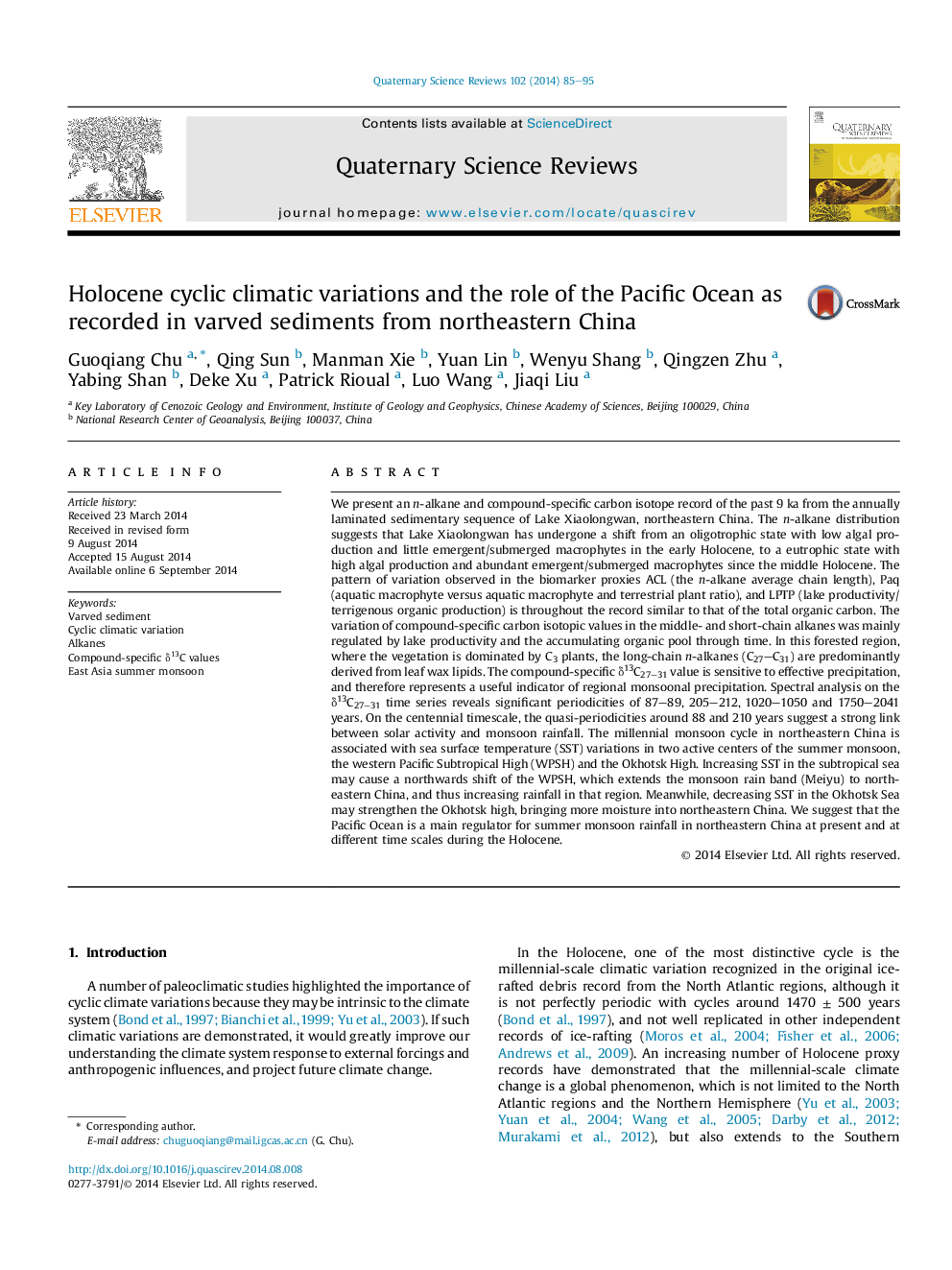| کد مقاله | کد نشریه | سال انتشار | مقاله انگلیسی | نسخه تمام متن |
|---|---|---|---|---|
| 4735322 | 1640832 | 2014 | 11 صفحه PDF | دانلود رایگان |
• An n-alkane and compound-specific carbon isotope record of the past 9 ka.
• New idea about the n-alkane distribution and lake evolution.
• The centennial monsoon oscillations could be linked to solar activity.
• The millennial monsoonal cycles are associated with SST variations.
• Pacific Ocean is a main regulator for monsoon rainfall in northeastern China.
We present an n-alkane and compound-specific carbon isotope record of the past 9 ka from the annually laminated sedimentary sequence of Lake Xiaolongwan, northeastern China. The n-alkane distribution suggests that Lake Xiaolongwan has undergone a shift from an oligotrophic state with low algal production and little emergent/submerged macrophytes in the early Holocene, to a eutrophic state with high algal production and abundant emergent/submerged macrophytes since the middle Holocene. The pattern of variation observed in the biomarker proxies ACL (the n-alkane average chain length), Paq (aquatic macrophyte versus aquatic macrophyte and terrestrial plant ratio), and LPTP (lake productivity/terrigenous organic production) is throughout the record similar to that of the total organic carbon. The variation of compound-specific carbon isotopic values in the middle- and short-chain alkanes was mainly regulated by lake productivity and the accumulating organic pool through time. In this forested region, where the vegetation is dominated by C3 plants, the long-chain n-alkanes (C27–C31) are predominantly derived from leaf wax lipids. The compound-specific δ13C27–31 value is sensitive to effective precipitation, and therefore represents a useful indicator of regional monsoonal precipitation. Spectral analysis on the δ13C27–31 time series reveals significant periodicities of 87–89, 205–212, 1020–1050 and 1750–2041 years. On the centennial timescale, the quasi-periodicities around 88 and 210 years suggest a strong link between solar activity and monsoon rainfall. The millennial monsoon cycle in northeastern China is associated with sea surface temperature (SST) variations in two active centers of the summer monsoon, the western Pacific Subtropical High (WPSH) and the Okhotsk High. Increasing SST in the subtropical sea may cause a northwards shift of the WPSH, which extends the monsoon rain band (Meiyu) to northeastern China, and thus increasing rainfall in that region. Meanwhile, decreasing SST in the Okhotsk Sea may strengthen the Okhotsk high, bringing more moisture into northeastern China. We suggest that the Pacific Ocean is a main regulator for summer monsoon rainfall in northeastern China at present and at different time scales during the Holocene.
Journal: Quaternary Science Reviews - Volume 102, 15 October 2014, Pages 85–95
